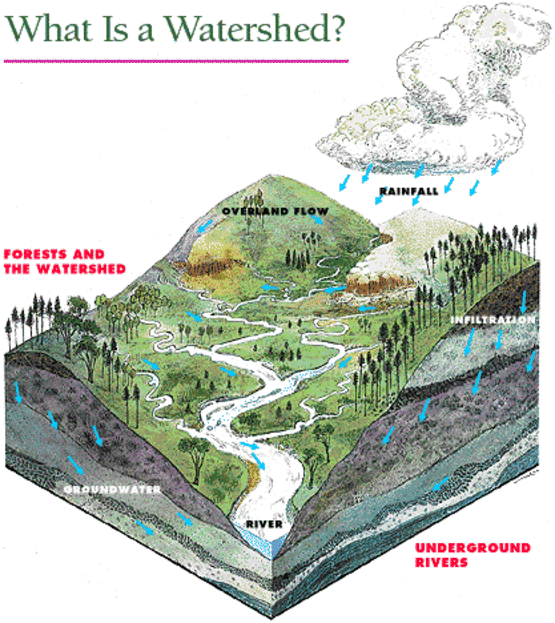What is a Watershed and Why Do They Matter?

A watershed is an area of land that drains all the streams and rainfall to a common outlet, like a lake or ocean. Watershed is sometimes used interchangeably with drainage basin or catchment.
The watershed consists of surface water--lakes, streams, reservoirs, and wetlands--and all the underlying ground water.
Watersheds are important because the water quality of a body of water is affected by things, human-caused and naturally occurring, that happen in the land area "above" and around the water in the watershed.
We can't control everything that happens in the watershed (i.e. rainfall and weather), but it is important that we take steps to control what we can. The Skaneateles Lake Watershed is unique in that the ratio of land compared to the surface area of the lake is quite small, only 4.36 sq. miles of watershed for every square mile of lake surface. In contrast, Cayuga Lake has a ratio of 23.4 sq. miles of watershed per sq. mile of lake surface. There are many steps that can and should be taken in the watershed to protect the lake, like reducing surface water runoff, monitoring and managing for invasive species, reducing the nutrients from fertilizers and septic systems that enter the lake, etc.
The small ratio of land to water in the watershed strengthens the potential impacts that our efforts in the watershed- whether individual, group, town, or county level- can have on protecting the water quality of our lake.
Last updated April 2, 2020